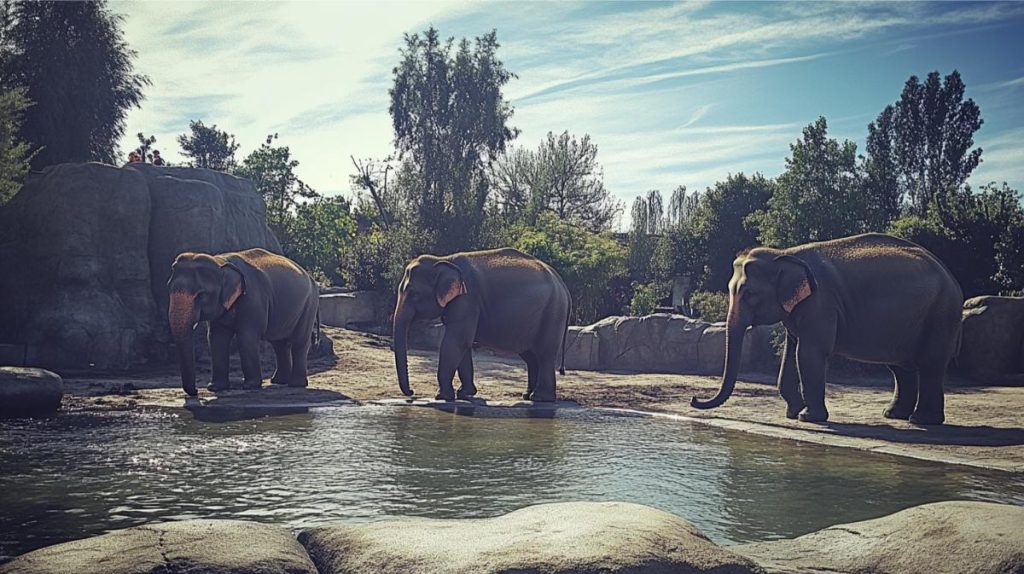Have you ever imagined a world without majestic animals roaming free in their natural habitats? It’s a sad reality that many of our planet’s most incredible creatures are facing extinction.
From the powerful Amur tiger to the gentle giant elephants, these amazing beings are disappearing at an alarming rate.
Your generation might be the last to witness these magnificent animals in the wild if we don’t take action now. The clock is ticking for many species, and without urgent conservation efforts, they could vanish forever.
But don’t lose hope just yet! There are dedicated people working tirelessly to protect these creatures and their habitats.
You can play a part in saving these breathtaking animals too. By learning about their challenges and supporting conservation projects, you’re helping to ensure future generations can marvel at the beauty of our diverse animal kingdom.
Let’s dive into the world of endangered wildlife and discover how we can make a difference.
Key Takeaways
- Many majestic animals are on the brink of extinction in the wild.
- Human activities pose significant threats to wildlife and their habitats.
- Conservation efforts and public support are crucial for protecting endangered species.
Threats Leading to the Brink of Disappearance

Majestic animals face serious dangers in the wild. You’ll be shocked to learn about the main threats pushing them towards extinction.
The Ruthless Reality of Poaching
Ever wondered why some animals are vanishing? Poaching is a big culprit! It’s like a real-life game of hide and seek, but with dire consequences. Poachers hunt animals for their valuable parts, like ivory tusks or rhino horns.
Did you know? In 2023, poachers killed over 450 rhinos in South Africa alone. Yikes!
Poaching isn’t just about money. It’s also fueled by:
- Traditional medicine beliefs
- Trophy hunting
- Exotic pet trade
You might think twice about that ivory trinket now, huh?
Habitat Loss: The Silent Killer
Picture this: You’re comfy at home, then suddenly your house disappears! That’s what habitat loss feels like for animals. As humans expand, we gobble up natural spaces.
Here’s a wild fact: We lose about 18.7 million acres of forests annually. That’s like 27 soccer fields per minute!
Habitat loss affects animals in sneaky ways:
- Less food and water
- Fewer places to hide from predators
- Harder to find mates
Next time you see a new mall, think about the critters who used to call that place home.
Climate Change and Its Effects on Ecosystems
Climate change is like a party crasher for ecosystems. It’s uninvited, annoying, and messes everything up! As temperatures rise, animals face new challenges.
Take polar bears, for example. Their icy homes are melting faster than an ice cream on a hot day. Brrr!
Climate change causes:
- Altered migration patterns
- Changes in food availability
- Extreme weather events
You might not see it, but these changes are like a game of musical chairs for animals. When the music stops, not everyone finds a seat!
Conservation Efforts to Save Our Majestic Wildlife

Many amazing projects are working to protect endangered animals. People are taking action in the field, in labs, and through education to help save wildlife.
On The Ground: Protection and Anti-Poaching Initiatives
You might be surprised to learn how much work goes into protecting animals from poachers.
Rangers risk their lives daily to guard endangered species like rhinos and elephants. They use high-tech tools like drones and tracking collars to keep an eye on animals.
In Africa, anti-poaching teams patrol huge areas to protect lions, cheetahs, and other big cats. Some groups even train dogs to sniff out poachers and wildlife products.
Community programs give people who live near wildlife other ways to make money. This helps stop poaching driven by poverty.
When local people benefit from conservation, they’re more likely to support it.
In The Lab: Science and Research
Scientists are working hard to save endangered animals through research. They study animal behavior, genetics, and habitats to find the best ways to protect species.
You’d be amazed at how DNA testing helps fight wildlife crime. It can trace ivory and other illegal animal products back to their source.
Breeding programs give hope for critically endangered animals like Siberian tigers and white rhinos. Scientists are even using cutting-edge techniques like artificial insemination and cloning.
New technologies help track animal populations. Camera traps and satellite imaging let researchers count animals over huge areas.
Through Our Lives: Education and Awareness
You have the power to help save wildlife through your everyday choices. Education programs teach people about endangered animals and how to protect them.
Zoos and wildlife parks play a big role in conservation education. They let you see amazing creatures up close and learn how to help them.
Social media campaigns spread the word about endangered species. They can quickly reach millions of people with important messages.
Eco-tourism lets you enjoy wildlife while supporting conservation. When you go on safari, your money helps protect the animals you see.
School programs teach kids about wildlife from a young age. This creates a new generation of conservation-minded people.
